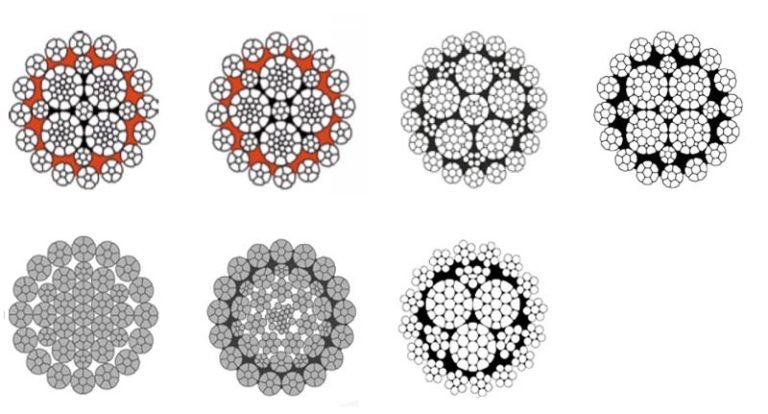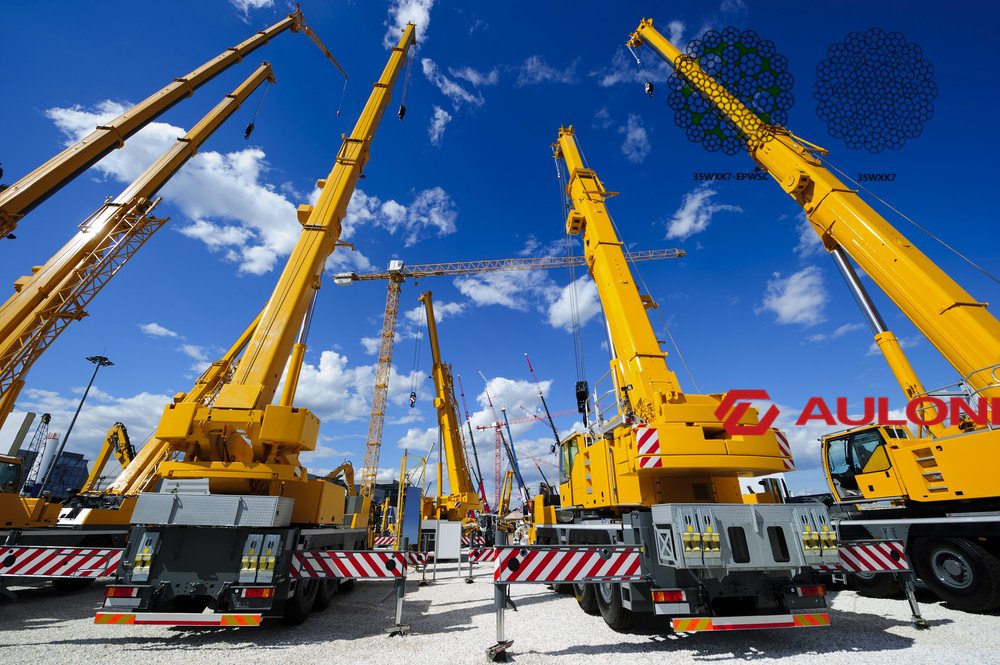Comprehensive Strategies for Preventing Corrosion in Steel Cables
Steel cables are widely used in applications requiring high strength and flexibility, including marine operations, mining, construction, and transportation. However, steel cables are susceptible to corrosion, especially in harsh environments exposed to moisture, saltwater, or chemicals. Corrosion weakens the structural integrity of steel, leading to costly failures and safety risks. This guide provides an in-depth overview of preventive measures, protective coatings, and advanced treatments that extend the life of steel cables by minimizing corrosion.
1. Understanding Corrosion in Steel Cables
Corrosion in steel cables is an electrochemical process where steel reacts with oxygen and moisture, forming rust. This process compromises the cable’s mechanical strength, flexibility, and load-bearing capacity. There are various types of corrosion that can affect steel cables, including:
- Uniform Corrosion: This type occurs evenly across the surface of the cable, often due to exposure to wet or humid conditions.
- Galvanic Corrosion: Occurs when steel comes into contact with another metal in an electrolyte (e.g., saltwater), causing accelerated degradation.
- Pitting and Crevice Corrosion: Often seen in localized areas, especially in marine environments or areas where debris is trapped within the cable strands.
2. Choosing Corrosion-Resistant Materials and Coatings
One of the most effective ways to prevent corrosion is to select materials and coatings that resist oxidation and chemical reactions.
- Galvanized Steel: Steel cables can be galvanized by coating them with zinc, which acts as a sacrificial layer. Zinc corrodes preferentially, protecting the steel underneath.
- Stainless Steel: Stainless steel cables, while more expensive, offer natural resistance to corrosion due to their chromium content, which forms a passive oxide layer.
- Polymer-Coated Cables: Applying a polymer coating (such as PVC or nylon) around steel cables protects them from direct exposure to moisture and chemicals.
- Aluminum Coating: An aluminum-based coating can also provide long-lasting protection in various environments by forming a stable oxide layer.
3. Application of Protective Lubricants
Lubrication is essential to prevent internal corrosion, as it limits water ingress and reduces friction between strands.
- Choosing the Right Lubricant: Select lubricants designed for corrosion protection in wet or saline environments. Petroleum-based greases with anti-corrosion additives are commonly used.
- Lubrication Frequency: Regularly lubricate the cable based on the environment’s exposure level. In marine or highly humid environments, monthly lubrication may be necessary.
- Lubrication Application Methods: Use pressure lubricators for thorough penetration into cable strands, ensuring both external and internal protection. Applying the lubricant to warm cables can improve penetration.
4. Advanced Anti-Corrosion Technologies
Modern anti-corrosion technologies offer additional layers of protection for steel cables, particularly in critical industrial and marine applications.
- Cathodic Protection: This technique involves attaching sacrificial anodes made of metals like zinc, aluminum, or magnesium to the cable. The anodes corrode instead of the steel, providing long-term protection.
- Electroplating and Epoxy Coatings: Electroplating involves coating steel cables with metals such as nickel or copper to resist corrosion, while epoxy coatings provide a hard, protective barrier.
- Vapor Corrosion Inhibitors (VCIs): VCIs are chemicals that release protective vapors, forming a thin, invisible layer on the steel surface. VCIs are especially useful for cables stored in high-moisture environments.
5. Storage Best Practices
Proper storage of steel cables significantly reduces corrosion risk, particularly for spare or infrequently used cables.
- Dry and Climate-Controlled Storage: Store cables in a cool, dry, and temperature-controlled environment to minimize moisture exposure.
- Avoid Direct Contact with Concrete: Concrete can retain moisture and leach salts, accelerating corrosion. Always place cables on wooden pallets or racks.
- Cover and Seal Packaging: When possible, use sealed and moisture-proof packaging for stored cables. Desiccants can be added to further reduce humidity within packaging.
6. Regular Inspection and Maintenance
Regular inspection and timely maintenance are key to identifying early signs of corrosion and taking corrective action.
- Visual Inspection: Conduct routine visual inspections for discoloration, surface rust, or pitting, particularly in joints and connections.
- Nondestructive Testing (NDT): NDT techniques like magnetic particle inspection can detect internal corrosion without damaging the cable.
- Replace Damaged Sections: Corroded or damaged sections should be replaced immediately to prevent load-bearing weaknesses.
7. Environmental and Operational Considerations
Environmental factors, such as humidity, temperature, and exposure to salts or chemicals, can influence corrosion rates and dictate preventive strategies.
- In Coastal or Marine Applications: Use stainless or galvanized steel with additional polymer or epoxy coatings, as saltwater accelerates corrosion.
- In Industrial Chemical Environments: Choose cables with specialized coatings resistant to specific chemicals or acids present in the environment.
- Monitor Operational Conditions: Avoid prolonged exposure to high temperatures or abrasion, as these factors can wear down protective coatings, leaving steel more vulnerable to corrosion.
8. Advanced Coatings and Treatments
Advanced coatings and treatments provide enhanced protection for steel cables in highly corrosive environments.
- Polyurethane Coating: This flexible, durable coating offers excellent resistance to UV rays, water, and abrasion, extending cable life in exposed outdoor settings.
- Hot-Dip Galvanizing: For applications where heavy-duty protection is required, hot-dip galvanizing offers thicker and more durable coverage compared to standard galvanizing.
- Powder Coating: Powder-coated steel cables are coated with a dry powder that is cured to form a hard, durable finish, providing long-lasting protection.
9. Cleaning and Maintenance Procedures
Regular cleaning and maintenance help remove contaminants that can accelerate corrosion.
- Periodic Cleaning: Clean steel cables with mild detergents and avoid harsh chemicals that can damage protective coatings. A gentle rinse with fresh water is recommended for cables exposed to saltwater.
- Removing Rust: For minor surface rust, apply a wire brush or a commercial rust remover. Re-apply protective coatings after rust removal to prevent further corrosion.
- Avoiding Abrasive Cleaning Methods: Abrasive cleaning can damage protective coatings. Use soft brushes or cloths instead.
10. Monitoring and Predictive Maintenance
Advanced monitoring and predictive maintenance systems enable timely intervention to prevent severe corrosion damage.
- Corrosion Sensors: Install corrosion sensors that monitor environmental conditions and detect early signs of corrosion.
- Predictive Maintenance Software: Utilize software to analyze cable wear data, helping schedule maintenance based on actual conditions rather than arbitrary intervals.
- Visual and Infrared Inspection: Combining visual inspection with infrared imaging can identify areas where heat or friction may accelerate corrosion, guiding proactive maintenance actions.
11. Training and Awareness for Maintenance Personnel
Training maintenance teams on corrosion prevention techniques ensures consistent application of anti-corrosion measures.
- Regular Training on Anti-Corrosion Techniques: Equip personnel with knowledge on proper cleaning, lubrication, and protective coating application.
- Inspection and Reporting Protocols: Establish protocols for detecting, documenting, and addressing early signs of corrosion.
- Safe Handling Practices: Train personnel on handling steel cables without damaging protective layers, especially during installation and storage.
Conclusion
Preventing corrosion in steel cables requires a comprehensive approach that combines material selection, protective coatings, regular maintenance, and environmental management. By implementing these strategies, companies can significantly reduce corrosion-related costs, extend cable life, and improve safety. Through consistent care and the use of advanced anti-corrosion technologies, steel cables will retain their structural integrity, ensuring reliable performance in demanding applications.
For more information on steel cable maintenance and to explore our range of corrosion-resistant solutions, visit www.wireropes.net, or contact us at info@wireropes.net or via phone/WhatsApp at +86-15573139663.








